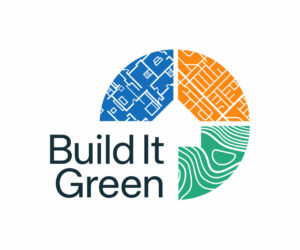This article originally appeared on the Rocky Mountain Institute website on September 21, 2017. It was written by Kelly Vaughn.
Download RMI’s latest report, An MPG for Homes: Driving Visible Value for Home Energy Performance in Real Estate.

There is tremendous risk and reward to being a first mover. News that Tesla overtook Ford in market value is perhaps the most illustrative example of what’s possible when innovative technologies disrupt the market.
While not all companies are set to be the next Tesla, many are placing very calculated bets on the clean energy revolution, and racing quickly to offer products or services that will open up new markets and capture significant share in existing ones. One such race is occurring in “green real estate,” with the potential to change how we search for real estate, how real estate professionals market homes, and how we view the performance and value of our own properties.
More and more online real estate portals in the U.S. are rolling out home energy scores on property listings. For example, Hotpads (a Zillow Group property, which, like others, is working with UtilityScore) and Estately (which recently announced a partnership with Clearly Energy) feature a home energy score. In December, we wrote about the launch of Energy realScores on realesate.com.au, which provides an instant snapshot of whole-home energy performance across more than 80 percent of Australia’s home market. Most recently, RealEstate.com launched a home energy score with data from UtilityScore for all active for-sale listings.
Now, Redfin—the fastest-growing top-10 real estate website —has added a home energy score thanks to a partnership with Tendril. They hope the home energy scores, fill the growing satisfaction gap that exists amongst homeowners who cite that improved energy performance is their number one unmet need.
Why Bet on Home Energy Scores?
Rocky Mountain Institute’s Residential Energy+ initiative has been closely tracking developments with real estate platforms, as we believe the increased transparency of home energy performance will have a tremendous ripple effect in driving both the supply of and demand for home energy performance improvements as a means to mitigate the carbon footprint of the residential buildings sector. But climate is merely one reason that so many companies consider the introduction of energy scores as a low-risk, high-reward endeavor. Let’s look at three major industry trends:
Trend I: More and more customers are, and will be, demanding higher-performing homes
U.S. homeowners spend on average $2,200 per year on energy bills and increasingly indicate demand for energy-efficient homes. Values beyond energy cost savings associated with home performance, such as improved comfort, health, and technology and connectivity, are becoming more and more recognized by today’s home buyers, especially millennials, who represent the largest growing U.S. home-buying demographic. The visibility of home energy performance through energy scores is well aligned with these customer trends, and can help savvy customers ensure that the value of their investment matches their expectations.
Trend 2: Real estate professionals are “seeing green” and increasingly turning to home energy performance as a way to connect with a new set of buyers
Real estate professionals can embrace and profit from these market trends by making home energy performance a core component of the support they provide for buyers and sellers. According to the National Association of Realtors 2017 Sustainability Report, 56 percent of survey respondents find that clients are interested in sustainability, and 71 percent said that energy efficiency promotion in listings was very or somewhat valuable. However, only 43 percent of respondents indicated that their region’s multiple listing service (MLS) has a green data field. More transparent home energy scores can fill this important gap and help real estate professionals embrace these market trends and take the initiative to make home energy performance central to their client support.
Trend 3: Energy scores can help connect the dots between motivation and financing
More and more financing options are available for homeowners—depending on their state or municipality. But without transparency into current or expected levels of home energy performance, it is difficult for homeowners and lenders alike to determine the level of risk undertaken when a loan is offered. According to RMI’s Finance the Future project, the increased transparency that performance data can provide can help scale the market for energy efficiency finance products. A study published by the Institute for Market Transformation (IMT) and the University of North Carolina shows that home energy upgrades reduce default and collateral risk significantly. Homes that receive home energy upgrades saw reduced default rates of over 30 percent. When financial markets respond to energy performance through mechanisms like an energy score, underwriters can consider the cash-flow risks associated with energy-hog homes, and perhaps better incentivize and price mortgages for energy-efficient homes versus high-energy-use homes.
What’s Happening Now vs. What’s Next?
RMI’s new report, An MPG for Homes, presents a robust dive into the state of the energy performance transparency market today and the potential for the market to grow further. This will benefit homeowners, real estate professionals, lenders, technology providers, and the environment; will instill confidence among first movers that they are placing the right bets; and will motivate fast followers to adopt home energy scores before the market—and their customer base—leaves them behind.
Download the report here, and—check each of the real estate platforms above to see how your home stacks up!
Image courtesy of iStock via RMI.


Alex Coba
Communication Associate
As a proud California native from Stockton, Alex brings a wealth of experience and a versatile skill set. He has a solid communication background with a Bachelor of Arts in Journalism and Public Relations from California State University, Chico. Alex is adept at strategic communications and media relations, with experience gathering and sharing stories from his local communities that uplift the unique spirit and values of those places. He is excited to join Build It Green, where he can apply his talents to further BIG’s mission to help communities across California thrive